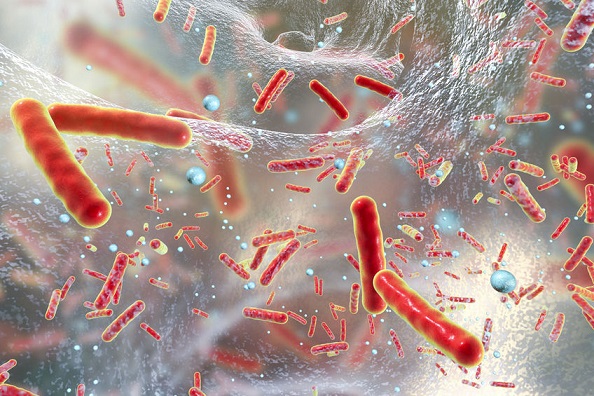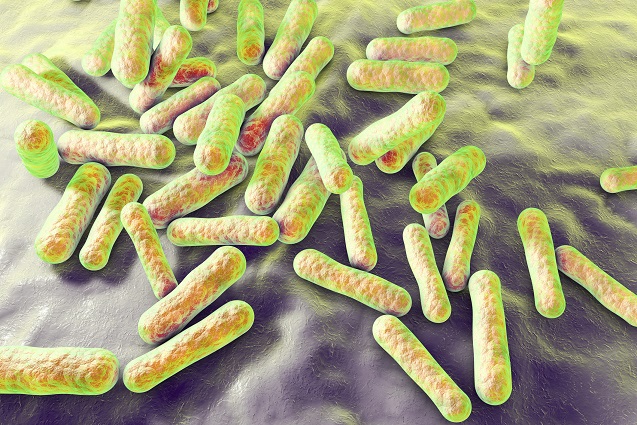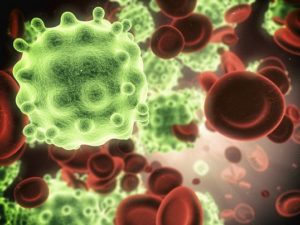 Once upon a time, 100 years ago, p. acnes bacteria was first discovered lurking in the pore of an acne patient.
Once upon a time, 100 years ago, p. acnes bacteria was first discovered lurking in the pore of an acne patient.
For decades, little was understood other than given its location, the bacteria was probably a key cog in the pimple machine. Slowly, its tactics emerged, that p.acnes feasted on sebum (oil) in the skin. That p.acnes thrived in the oxygen-deprived habitat of a skin pore, that its favourite hobby was reddening and inflaming.
Years later, the mysterious figure of benzoyl peroxide strolled into town, promising to defeat the bacteria forever. More recently, cracks showed in the master plan: hundreds of substrains popped up, and many actually protected human skin. As of 2019, p.acnes is overwhelmingly the best studied acne bacteria…
…but there is another, a skin-dwelling microorganism which has only just started down the research path. Knowledge is scant, and all the little details remain to be fleshed out.
It’s called staphylococcus epidermidis, and it may defend against acne.
Fact file
Staphylococcus epidermidis, put simply, is the most abundant bacteria strain on human skin. The two co-exist regularly, but p.acnes sticks to your skin pores, while s. epidermidis roams the vast plains of your cheeks and forehead.
It’s closely related to staphylococcus aureus, parent of the mutated MRSA “superbug”, spread by towels and contaminated medical instruments. Common antibiotics simply bounce off MRSA, and s. epidermis also stalks hospital corridors. It forms a thick glycocalyx slime which sticks to plastic, using prosthetic limbs and heart valves as a springboard to infect drug users, babies, and the elderly.
The difference is that normally, s. epidermidis resides on people’s skin totally harmlessly. It requires an open, festering wound to start committing evil. Compared to s. aureus, it also lacks the bloodstream-clotting enzyme coagulase.
Healthy human skin often contains 24 different families, particularly in sweaty locations like your armpits. S. epidermidis sticks to your skin like glue, forming dense biofilms with high resistance to antibiotics like clindamyacin.
Despite being cousins, s. epidermis can actually protect against s. aureus using an enzyme called serine protease, which cleaves the bacteria’s proteins in half…
…and luckily for us, s. epidermidis has a long enemy list. For 100 years since its discovery in 1884, s. epidermis was assumed to be a minor contributor to acne. Vast quantities were discovered in acne-prone skin pores, and its resistance to antibiotics sent shivers down scientists’ spines.
It’s only since 2000 that numerous peptides, proteases, and fermentation by-products have been discovered, offensive weapons which smash p.acnes into a thousand unsalvageable pieces.
In fact, the two strains are seemingly locked in a constant tug of war. Some predict that a skincare revolution is on the cards; that acne itself could be caused by deficiencies which allow p.acnes to expand.
P.acnes is the ruler of skin pores, but when a pore clogs up on the road to acneland, s. epidermis rushes to the oxygen-deprived environment like an Italian mayor rushing to a sack full of banknotes. The two species interact, and that’s when the magic happens, or maybe doesn’t happen.
The first secret – glycerol fermentation
 S. epidermis is a facultative anaerobic strain, meaning that it manufactures its energy (ATP) using oxygen, but can switch to fermentation in troubled times, like an oxygen-deprived skin pore. Glycerol meanwhile, is a popular moisturiser ingredient, but also a natural component of human skin. It’s a humectant which controls hydration, like the skincare craze hyaluronic acid.
S. epidermis is a facultative anaerobic strain, meaning that it manufactures its energy (ATP) using oxygen, but can switch to fermentation in troubled times, like an oxygen-deprived skin pore. Glycerol meanwhile, is a popular moisturiser ingredient, but also a natural component of human skin. It’s a humectant which controls hydration, like the skincare craze hyaluronic acid.
Just like bacteria ferments yogurt and creates an acidic flavour, s. epidermidis can ferment glycerol and churn out four fatty acids as by-products: acetic acid, butyric acid, lactic acid, and succinic acid. The latter can can target p.acnes and diffuse through its outer cell membrane like a stealthy assassin.
Once inside, it splits into anions and protons which lower the bacteria’s PH. P.acnes must maintain its cytoplasm at a near neutral PH to juggle its nutrients properly. To eject succinic acid’s protons, in a last gasp at survival, it uses up adenosine triphosphate, its all-important cellular energy source, eventually causing complete failure.
Succinic acid is the strongest against p.acnes of the four, and can also prevent p.acnes from stimulating inflammatory compounds like interleukin-6.
Scientists have actually placed p.acnes and s. epidermis side by side in a petri dish, and noticed much greater inhibition when glycerol was included as well. Of course, it’s possible that only glycerol has this power, but not so fast: s. epidermidis can also convert sucrose (table sugar) to succinic acid.
P. acnes itself cannot ferment sucrose, unable to cleave its glucose and fructose molecules apart. Therefore, this is a completely one-sided weapon. More promisingly, it hints at numerous possible fermentation fuels.
S. epidermidis isn’t normally a fermentation fanatic, but it becomes one in the single most important environment for acne prevention.
WARNING – turn brain on now
Furthermore, s. epidermis can kill p.acnes even without its glycerol supplies, like a boxer who prefer his big red gloves but can still punch pretty hard without.
P.acnes and s.epidermidis each have hundreds of massively varying substrains. Some inhibit p.acnes only slightly, but can shrink almost every strain. Others like FS1 destroy a smaller selection, but work wonders for those. The weakest strains are utterly feeble, while the monstrous 14.1.R is the sworn enemy of p.acnes society.
Likewise, their individual tactics vary massively. They include…
Antibacterial peptides – the powerful FS1 has 10 families of genes which are completely missing from many s. epidermidis strains. One gene called EpiA creates epidermin, a long, screw shaped antibacterial peptide (bacteriocide) which was first confirmed to destroy p.acnes over 30 years ago. It targets numerous gram-positive strains like p.acnes, and does it with style, attaching to p.acnes’ cell wall and disrupting its renewal.
S. epidermis FS1 also has genes related to lactococcin-972, another antibacterial peptide, which is also a bacteriocide transporter, guiding its fellow peptides across cell membranes and into battle. Enemy bacteria are constantly competing for its resources, so the chances are that several strains share these acne-obliterating molecules.
DNA slicing enzymes – the big cheese, the strongest strain yet known, 14.1.R manufactures a variety of toxins which delete p.acnes with a single glance.
They include serine protease, an enzyme that cleaves bonds in bacteria proteins, and nucleases, which shatter the bonds between nucleotides making up DNA. There’s also a gene family pumping out polymorphic toxins, a freshly discovered player in skin bacteria competition.
Compared to epidermins, which are launched like a desert missile, this s. epidermis strain uses contact dependent inhibition (CDI), injecting toxins directly into p.acnes. This finally solved the mystery of 14.1.R’s powerful, yet small inhibition zone. 14.1R had eight unique gene families overall.
Unknown! – the fact is that we barely know anything about how s. epidermidis works. Strains AU21 and AU23 both inhibit p.acnes moderately, with a wide inhibition zone, but pump out no special toxins. One rare gene in AU21 creates resistance to the antibiotic fusidic acid. Another defends against zinc and copper metals: neither relate to antibacterial properties.
One possibility is supercharged fermentation that pumps out extra succinic acid. Another is a bacteriocin so strange and alien that scientists cannot recognise it. Two more special genes enhance biofilm formation and glutathione (the antioxidant) production.
If this has made you confused, then good! Because the theme right now is confusion. S. epidermidis can suppress p.acnes, but why is a twisted, gnarly, poisonous frog-filled jungle which we’re only just hacking our way into.
The heat of inflammation
 Remembering that these powers are 100% unconfirmed, s. epidermidis may also extinguish the fiery inflammation of p.acnes.
Remembering that these powers are 100% unconfirmed, s. epidermidis may also extinguish the fiery inflammation of p.acnes.
P.acnes bacteria has two inflammatory powers, starting with inflammatory waste products churned out through sebum fermentation. The second is when p.acnes is targeted by your immune system as a foreign pathogen designated for removal.
A blast of chemicals is unleashed by toll-like receptor 2, a sensor found in keratinocytes (your main skin cells), swelling up your skin pore like a bouncy castle. The magic is that s.epidermidis blocks p.acnes from stimulating TLR2, using an ingredient of its cell wall called lipoteichoic acid, making existing p.acnes kinder and gentler.
S. epidermidis supposedly has a unique structure which maximises TLR2’s anti-inflammatory side. Then there’s toll like receptor 3. This version doesn’t launch inflammatory chemicals itself, but identifies potential targets like p.acnes in the first place, like a spy with binoculars.
Lipoteichoic acid returns to action, stimulating a protein called TRAF1. There’s one limit: TLR3 only falls for surface-level skin cell (keratinocyte) inflammation, because unlike immune system macrophages (white blood cells), another worthy target, keratinocytes are used to friendly bacterial strains hanging around.
Then we have butyric acid, another fatty acid pumped out during s. epidermis fermentation. Butyric acid is closely related to butyrate, the compound that gives butter its natural yellowness. Butyric acid reduces both interleukin 6 and IL-8, chemicals linked strongly to acne. It also inhibits an obscure inflammatory enzyme called histone deacetylase, and the inflammatory receptor GPR43. Butyric acid can even soothe the skinflammation from sunlight overdoses.
Another fun fact: butyrate is also pumped out by your gut bacteria, can help weight loss by suppressing appetite, and even boost your mood.
Scientists and their madcap schemes
What does this actually mean for the pimples you’d love to squeeze into nonexistence every morning? Scientists can’t decide either. The question is whether in acne patients, p.acnes rules over impoverished s. epidermidis like a power mad king.
Revolutionary topical treatments could spray s. epidermidis directly onto your face, which already exists for nitrosomonas eutropha, an acne-clearing soil bacteria.
Creams containing glycerol and sucrose could be rubbed into the skin, particularly considering that p.acnes cannot ferment sucrose itself. If more molecules are discovered which s. epidermidis loves to feast on but p.acnes is disgusted by, they could be game changers.
As we speak, high tech labs hidden under fiery volcano craters (ignore that last part) are isolating the antimicrobial peptides with the goal of manufacturing them en masse. It’s possible that in 20 years, every topical treatment on drug store shelves will have s epidermidis as a bonus ingredient. As a natural resident of human skin, we automatically know that its side effects won’t be as harsh as accutane.
For years, scientists have grown more worried about how antibiotics indiscriminately decimate healthy flora on your face (warning: they’re right!). S. epidermidis could easily lead to “selective antibiotics” which successfully target p.acnes alone.
Maybe acne patients lack the aggressive s.epidermidis strains, and are saddled with the timid ones. The balance of skin flora could even explain unusually stubborn acne. Stories of people who bathe their p.acnes in benzoyl peroxide yet fail miserably are everywhere. Maybe it’s because they decimated their s. epidermidis colonies just as badly.
Similarly, there’s always one guy in your office or school who seems immune from pimples, hovering above ground with a shining white halo around his head. Genetics and an accidental acne-clearing diet are classic reasons, but what if his staphylococcus epidermidis colonies got a headstart early in life?
S. epidermidis forms strong, sticky biofilms, gluing itself in place, and maybe this gave Mr A.F. Skin an inbuilt resistance to p.acnes and all its mischief. Speaking of genetics, people’s immune systems could vary in their responses to the two strains, allowing one to establish dominance.
The wise words of caution
However, it isn’t all a happy stroll into an acne-free future with colourful rainbows and a smiling, yellow sun. For all its safety, s. epidermidis causes nasty infections in hospitals every day. If the revolutionary spray overdoes its dosage, s.epidermidis could cause new, unforeseen problems, like a grey, clammy zombie tone. We could be out of the frying pan and into the fire.
The indiviual miracle compounds like butyric acid also have problems, like a short half life, being rapidly metabolised by skin cells. It could break down into anti-inflammatory metabolites, but it could also succeed only in a petri dish and not living breathing human skin.
When placed side by side, s. epidermidis is proven to nibble away at p.acnes. However, the all-important imbalance in acne patients is still unproven.
The benefits could simply be too weak. Eating a juicy red apple supplies acne-clearing antioxidants, but it won’t make your pimples disintegrate into dust and float away instantly. The anti-inflammatory properties, promising as they are, are not 100% proven on a real person’s skin, with so many different enzymes, proteins, genes and receptors interacting. With TLR2, s.epidermidis can prevent the stimulation from p.acnes, but possibly not calm it down afterwards. Anything connected to inflammation is always a tricky minefield of barbed wires and suspense.
Likewise, s.epidermidis is excellent at calming down red and inflamed rabbit skin, but human pimples are another story; the closest study we have is p.acnes. Fermenting glycerol could be a bad thing, because of its importance for skin moisture, and this just illustrates the complexity of everything. One unique molecule discovered in staphylococcus epidermis was named 6-N-hydroxyaminopurine, which prevented UV radiation damage, but unique powers open up unique dangers.
The verdict!
Therefore, the most profitable bet to harass your confused local bookmaker with is this. The 99% harmless staphylococcus epidermidis won’t drag acne kicking and screaming to the history books.
For one thing, acne must be cured from the inside out. Ignore diet and lifestyle, and you are ignoring clear skin itself. If there was a smoking gun, it would have been discovered by now.
Nevertheless, is is now undeniable that s. epidermidis has an intimate relationship with p.acnes bacteria. Its push-pull, tug of war manoeuvrings on the battlefield of our skin are endless, whether it’s peptides, succinic acid, or butyric acid.
Put your money on it: there will be future developments with staphylococcus epidermidis. It might even blast its way onto newspaper headlines, only to be forgotten about within milliseconds.
Right now, I don’t have any recommendations for you, except to stay on your toes for fresh evidence. If there’s fresh evidence for one old strategy, it’s to keep rejecting destructive topical antibiotics like clindamycin.
S. epidermidis just underlines the importance of diverse facial flora. It all started with gut bacteria, and how it affects your happiness and inflammation levels. Now the research is spreading to your skin.
Gaze in the mirror right now, and you could be gazing at a microscopic, undiscovered bacteria that holds the key to god-like skin.
Thanks for reading!
